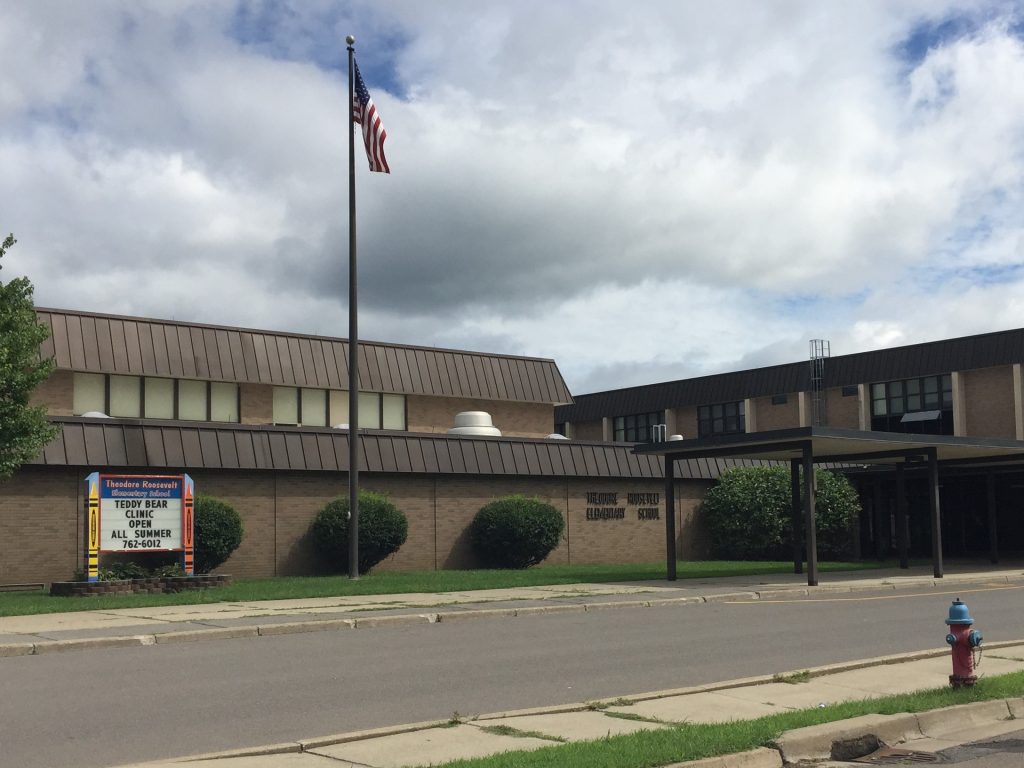Binghamton City School District’s (BCSD) Board of Education (BOE) has announced their plan to rebuild Theodore Roosevelt Elementary School.
On Tuesday, Nov. 15, representatives of the BCSD and families from the district attended a BOE board meeting to discuss the future of one of the district’s seven elementary schools. Community members expressed concerns about some of the proposed scenarios, which included the possibility of closing down Roosevelt, and whether or not they should plan to rebuild and renovate the school instead. Throughout the event, a series of presentations were displayed among the crowd, analyzing the district’s feasibility study, according to a WBNG article. At the end of the meeting, the BOE decided not to decommission any other elementary school and to work on rebuilding Roosevelt.
Kerry Gallagher, a public information officer for the BCSD, shared information directly communicated to her by the BOE. In Gallagher’s email, the BOE described the district’s mission as providing a safe environment for students to continue their education.
“Our intention is to bring a 21st century school to the North Side of Binghamton, one of the most underserved sections of the city,’’ Gallagher wrote in an email. “The design of a new facility has not been addressed in any detail at this time. Our focus is on securing the necessary funding for this project, a process that will involve collaborating with our elected representatives and the New York State Department of Education to secure funding.”
Gallagher discussed the BOE’s planned course of action regarding the changes that will be made to the building, along with the placement of students and faculty during construction. Due to the building’s deteriorating condition, repurposing most of the building will be needed to ensure a safe and engaging environment for students, according to the BOE. Roosevelt will be replaced with a new facility at their current location, without closing the other six elementary schools.
“If the rebuild involves keeping the same structure and renovating the inside and outside of the building, staff and students would be temporarily relocated during the construction,” Gallagher wrote in an email. “If funding is obtained to rebuild all or a portion of the school, faculty and students would likely not need to be relocated. Any construction may minimally disrupt traffic flow due to construction.”
The BOE took five possible scenarios under consideration. Their chosen option, to rebuild Roosevelt, means the BOE would need to secure funding for the project, and move current students to temporary schools. Due to the amount of New York State aid available, completing construction for the option could take anywhere from four to 15 years.
Jonathan Wong, ‘22, is currently working as a teacher’s assistant, observing middle and high school classes. Wong said he is glad the board decided to rebuild Roosevelt, and that an improved atmosphere might help children achieve their educational aspirations.
“During my fieldwork observations, I take note of different strategies teachers use in their instruction, how students engage in the material and the overall classroom environment that each class produces,” Wong said. “I can see how changes to the environment can shape them into devoted students. With the renovation, I feel like these kids will be able to connect better with their peers and the teachers.”
Prior to formulating its plan for the district, the BOE said it examined the feasibility study’s data, which evaluates all aspects of district-wide attendance zones, population trends and demographics, building and site capacity and more. The future of Roosevelt has been in discussion for 19 months, according to Gallagher.
Some options the BOE considered included replacing classroom windows, revitalizing faculty and staff and renovating the entire building upon reviewing the various scenarios and data presented to them. According to the feasibility study, the board hopes to build a school that has a program that can respond to advancements in technology and the needs of the community. They will look into the planning of how current spaces can be turned into larger classrooms and other accommodations that will assist in the emotional and social learning for students.
Denis Pogosyan, treasurer of SUNY Kids and a sophomore majoring in integrative neuroscience, discussed his experience working with children in the Binghamton area and how this renovation might affect their individual performance.
“Improving quality of education should definitely be a priority, especially in the Binghamton area,” Pogosyan said. “Kids I’ve worked with have complained about the academics and the behavior of other children at their schools. While this is likely due to a myriad of factors, the design of a school is related to children’s academic performance, so I think this renovation is definitely a step in the right direction.”



